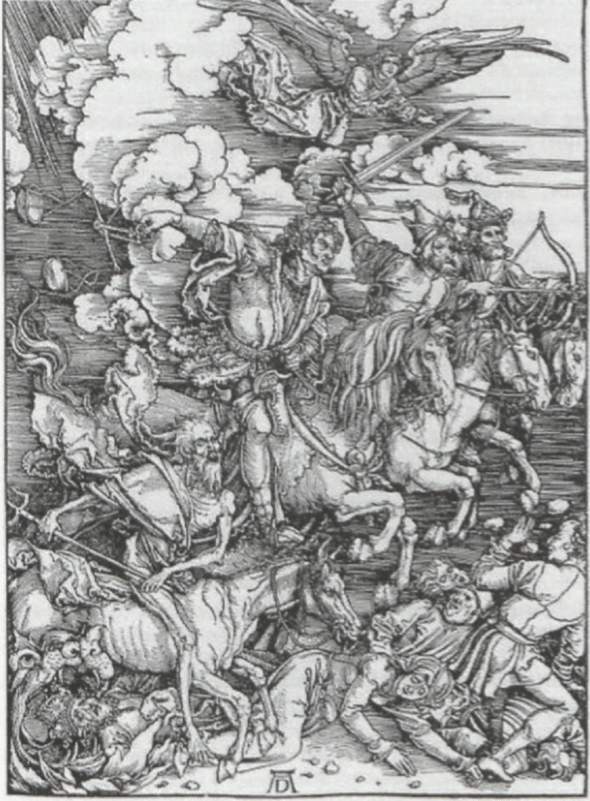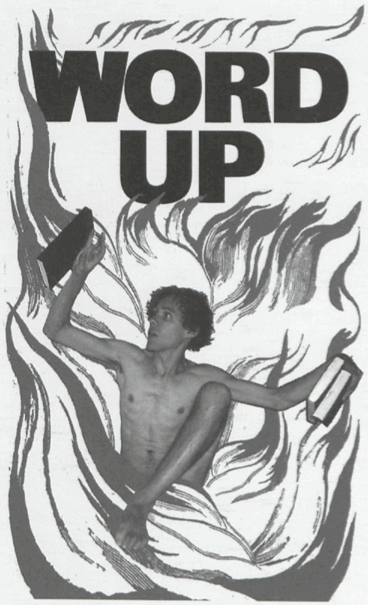NEWSLETTER
The Apocalypse and the Shape of Things to Come
Room 90 (Prints and Drawings Gallery) British Museum, 17 December 1999 - 24 April 2000
The close of the second millennium is an appropriate moment to evaluate the legacy of one of the most vivid and controversial writings in the Christian canon, the Book of Revelation. Its adumbration of an apocalypse that was both destructive and redemptive provided a universal metaphor for the expression of all future eschatology both personal and collective, a rich vein of imagery that remains a force in contemporary culture. This exhibition and its associated publication will examine the pictorial tradition it engendered as represented principally by illuminated manuscripts, books, prints and drawings from the eleventh century up to the end of the Second World War; attention is focused on particular episodes or apocalyptic phases which have often, though not invariably, occurred at the end of centuries and have always been rooted in historical and political circumstances. The material will be drawn principally from the collections of the Department of Prints and Drawings and the British Library, supplemented by loans from other collections within the United Kingdom, the Rijksmuseum in Amsterdam and from East Coast American collections. British Museum Press will publish a fully illustrated catalogue edited by Frances Carey, Deputy Keeper of the Department of Prints and Drawings, with two introductory essays by Norman Cohn and Sir Frank Kermode. These will be followed by essays and catalogue entries accompanying the main chronological divisions by Jonathan Alexander (Institute of Fine Arts, New York), assisted by Michael Michael of Christie’s Education Department, for the medieval section; Peter Parshall (Reed College, Oregon), with Giulia Bartrum of the Department of Prints and Drawings, on the Reformation period; David Bindman (University College London) on millenarianism in England from the mid-seventeenth to nineteenth centuries and Frances Carey on the twentieth century. The film historian, Ian Christie, will contribute the concluding essay on apocalyptic imagery and the cinema.
After the great medieval manuscript cycles, the defining moment in the development of the pictorial tradition was Dürer’s publication of his Apocalypse woodcuts which first appeared in 1498; their resonance has been felt at all levels of subsequent portrayal, including examples such as the 1921 film, The Four Horsemen of the Apocalypse, in which Rudolph Valentino is shown holding the Revelation of St John adorned with copies of Dürer’s prints. Apocalyptic imagery was quickly appropriated as a vehicle for propaganda and satire, becoming secularised at the hands of artists
like James Gillray in the late eighteenth-century. Gillray’s contemporary, William Blake, evolved through his illuminated prophetic books of 1790-1820 and a series of watercolours c. 1805-10, a concept of Apocalypse and Judgement that was part of a personal mythology responding to the millenarian currents and revolutionary upheavals of the period in question.The growing secularisation of modern society has in no way diminished the power of apocalyptic metaphor which has become part of the language of popular culture. Throughout the twentieth century it has continued as a vehicle for visions of both destruction and regeneration, of nihilistic despair and futuristic fantasy, in the hands of many writers, artists, and film directors, for the cinema has been a critical factor in the transmission of such imagery. As the course of the First World War and its aftermath unfolded exultancy changed to despair; the hope of regeneration was replaced by a sense of ultimate destruction on a cosmic scale which continued to gather momentum under pressure of political developments in the 1930s, achieving a terrible realisation in the events of the Second World War.
In conjunction with the exhibition the London Philharmonic is staging an Apocalypse festival in December 1999 that will open with the film The Four Horsemen of the Apocalypse accompanied by a full orchestra conducted by Carl Davis; the British Academy will hold a series of three lectures early in 2000, the National Film Theatre is scheduling a film season and there will be a joint British Museum/Warburg Institute scholarly symposium on the 17-18th March 2000.
begin page 87 | ↑ back to top

